A common problem with Gopher Apples is finding them in fruit. I searched for over a dozen years before finding any. Apparently the woodland creatures had nearly the same sense of timing as I did though they were a shade earlier gobbling up the fruit before I got there. The Gopher Appes we saw this weekend were not yet ripe enough to eat — by us or the denizens of the scrub.
Actually a clonal shrub Gopher Apples look like young oaks. One plant can occupy 100 square feet. They are very hardy and also fire resistant. And while Gopher Apples are usually not much more than a foot high the ones photographed above easily reached two feet tall. Look for this scruffy plant in full sun in dry pinelands, occasionally along sandy roads, and in coastal dunes. They like also to grow among Turkey Oaks and Longleaf Pine. The ripe fruit looks inedible. It’s shaped like a large olive and is a pasty, dirty white often with a bit of pink and yellow stain here and there. Most people think Gopher Apples taste like pink baseball bubble gum. Interestingly they are related to the Sea Grape and the Pigeon Plum. You can read more about them here.
Other species are also producing now. Last week this newsletter mentioned the Podocarpus and Strawberry Guava both of which are getting close to heavy fruiting. During the Melbourne foraging class we saw many Elderberry trees covered with dark purple fruit, and some of the fruit was close to tasting good. Elderberries right off the bush are often disappointing but improve greatly with processing. That can be drying or being made into pies, jam, syrup, and wine. Elderberries like to grow in damp spots as does the deadly Water Hemlock so don’t confuse them. You can read about that here. Elderberry shoots transplant well. They will survive in a lawn if near a down spout or an irrigation sprinkler. They also move. Not long-lived they will establish themselves then send up new shoots. The older trees survive seven to eight years so your clump is always changing. You can read about Elderberries here.
This year seems to be a potentially good one for native grapes. They fruit irregularly so there can be a good year now and then with a lot of lean years in between. Most of the native muscadine grapes are still green with only an occasional early ripe fruit. But they seem plentiful this year and should be easy to find in mid-August through September. Also pick them while they are still grapes. Some botanists want to take our local species out of the Vitis genus and create a new one called Munsoniana. You can read about grapes here.
Also worth mentioning are Saw Palmetto berries. Even when ripe these really do not make it into the edible mainstream. Yes they are edible, and nutritious including their oil, but the berry flavor is intense and not agreeable to most palates: Think intense blue cheese with a lot of hot pepper tossed in. They won’t be ripe for another couple of months. Currently the fruits are green or starting to yellow. They are hard and exceptionally astringent. However at this stage they can be harvested for medicinal use. Thus the poaching will be starting. The harvesting of Saw Palmetto berries for medicinal use is a $100 million dollar business in Florida and that leads to a lot of people stealing berries off private land. You can read about the Saw Palmetto here.
If blossoms are any indication, there will also be a lot of Tallow Plums this year. Despite their common name Ximenia americana are not plums nor do they have anything that can be used like tallow. And although they are reportedly distributed throughout the peninsula of the state I have only seen them on both coasts. The fragrant fuzzy blossoms and occasional thorns helps you identify this shrubby tree before it fruits. Eventually the fruit will look like bright yellow ping-pong balls. The blossoms are eaten in soups, the young leaves when thoroughly cooked are edible. The seed oil is used like ghee in India. A few roasted kernels are edible but can make you sick if eaten in quantity. The plant has about five dozen common names. If you want to read about edible uses of the plant go here. There are reports of the green fruit being used to numb gums for dental work. For an outside source on medicinal uses go here.
Upcoming foraging classes. These classes are hands on and usually last about four hours depending on the location, weather, and number of participants.
Sunday, July 24th, Bayshore Live Oak Park, 2200 East Lake Road, Port Charlotte, FL. 9 a.m. We meet at the parking lot across the street from Ganyard Road
Sunday, July 31st, Blanchard Park, 10501 Jay Blanchard Trail, Orlando, FL 32817, 9 a.m. Meet next to the tennis courts.
Sunday, Aug. 7th, Florida State College, south campus, 11901 Beach Blvd., Jacksonville, 32246. 9 a.m. We meet in front of building “D.”
Sunday, Aug 14th, Jervey Gantt Recreation Complex, 2390 SE 36th Ave., Ocala, FL, 34471. 9 a.m. Meet in the parking lot north of the pool.
To learn more about the classes, go here.
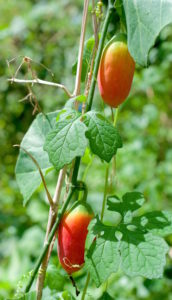
If you don’t recognize the two different species in this photo you should be reading the Green Deane Forum.
Want to identify a plant? Perhaps you’re looking for a foraging reference? You might have a UFO, an Unidentified Flowering Object you want identified. On the Green Deane Forum we — including Green Deane and some 8,000 others from around the world — chat about foraging all year. And it’s not just about warm-weather plants or just North American flora. Many nations share common weeds so there’s a lot to talk about, such as the one to the left. There’s also more than weeds. The reference section has information for foraging around the world. There are also articles on food preservation, and forgotten skills from making bows to fermenting food. Recent topics include: Mushroom Identification Tips, Another Bolete: Edible? Wood Potato, Chocolate Mushie, Are All Crown Berries Edible? Keeping our cells young, Apple-like fruit on a vine, Square stem and balls of flowers, Is the saw Palmetto supposed to be bitter? Is This A Young Dandelion? Looks Like A Thistle Flower. Mint? Is This A Gopher Apple? No Flower Too Wrong, Apple-Like Fruit, Pink-White Flowers At The Nodes, Field Plant, Woodland Perennial, Frilly Pink Blossom, and Hopefully Groundnut. You can join the forum by clicking on the button on the upper right hand side of this page.
All of Green Deane’s videos are available for free on You Tube. They do have ads on them so every time you watch a Green Deane video I get a quarter of one cent. Four views, one cent. Not exactly a large money-maker but it helps pays for the newsletter. If you want to see the videos without ads and some in lightly better quality you can order the DVD set. It is nine DVDs with 15 videos on each. Many people want their own copy of the videos or they have a slow service and its easier to order then to watch them on-line. They make a good gift for that forager you know. Individual videos can also be ordered. You can order them by clicking on the button on the top right of this page or you can go here.
This is Newsletter 217.
If you would like to donate to Eat The Weeds please click here.


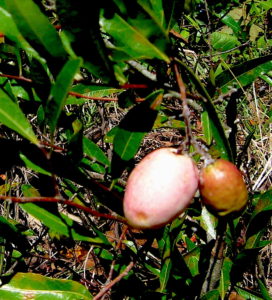

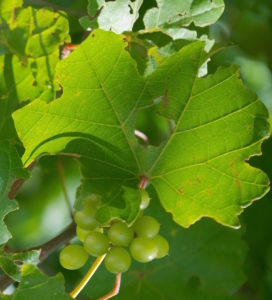
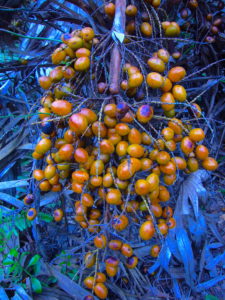

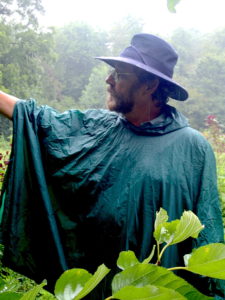


I always learn something
Thanks
I’ve four Saw palmettoes grown in big porous pots for ornamental purpose which is almost a tradition by many of my people in my district. One of these is now having “multiple heads” as illustrated by your image; but till now, and after nearly five years, I’ve harvested no berries. I wonder if I’m correct to call those multiple heads “spurs” as well.
For the first time I’ve heard of the Saw Palmetto Saga. Much interesting to know about the Quakers , the wrecked ship , the cannibals and that whole adventure. Thank you for the manner it has been introduced and more thanks for the precautions related to Saw palmetto we should be aware of. Truly, being interested in the medicinal aspect, I used to take processed Saw palmetto in pellet form – thank God keeping away from the ” rotten cheese steeped in tobacco juice”. I’ve never thought of the so numerous creatures sharing with me the benefits of Saw palmetto. “Our Lord Thou hath not created this in vain! Glory to Thee!” – holy verse.